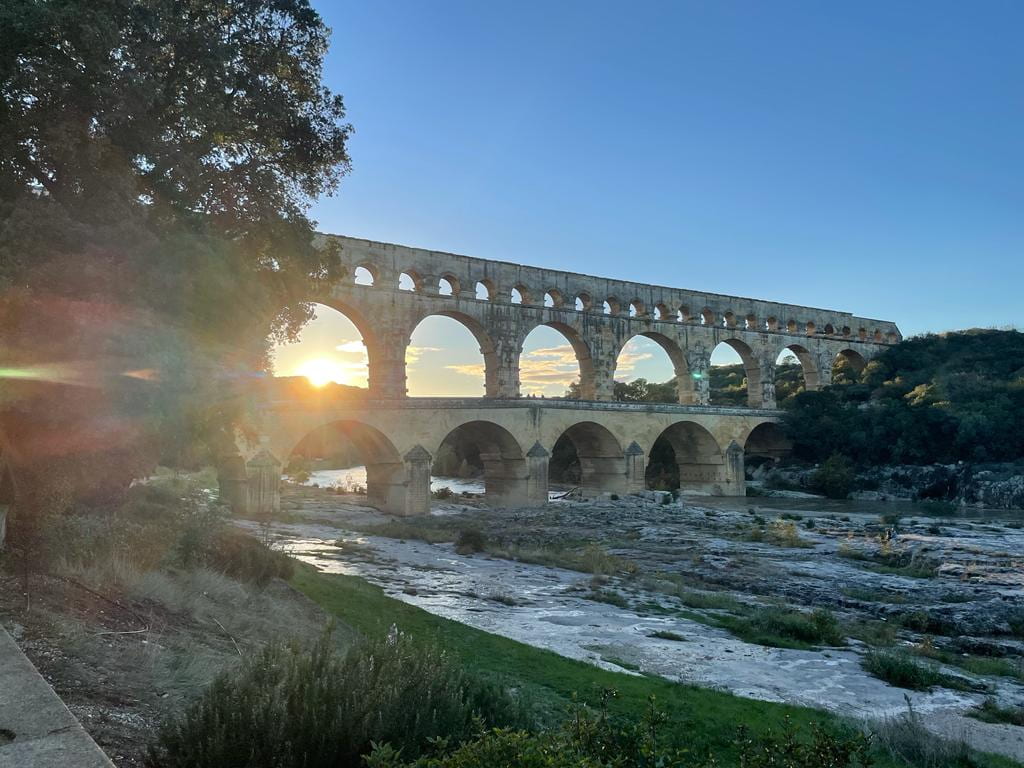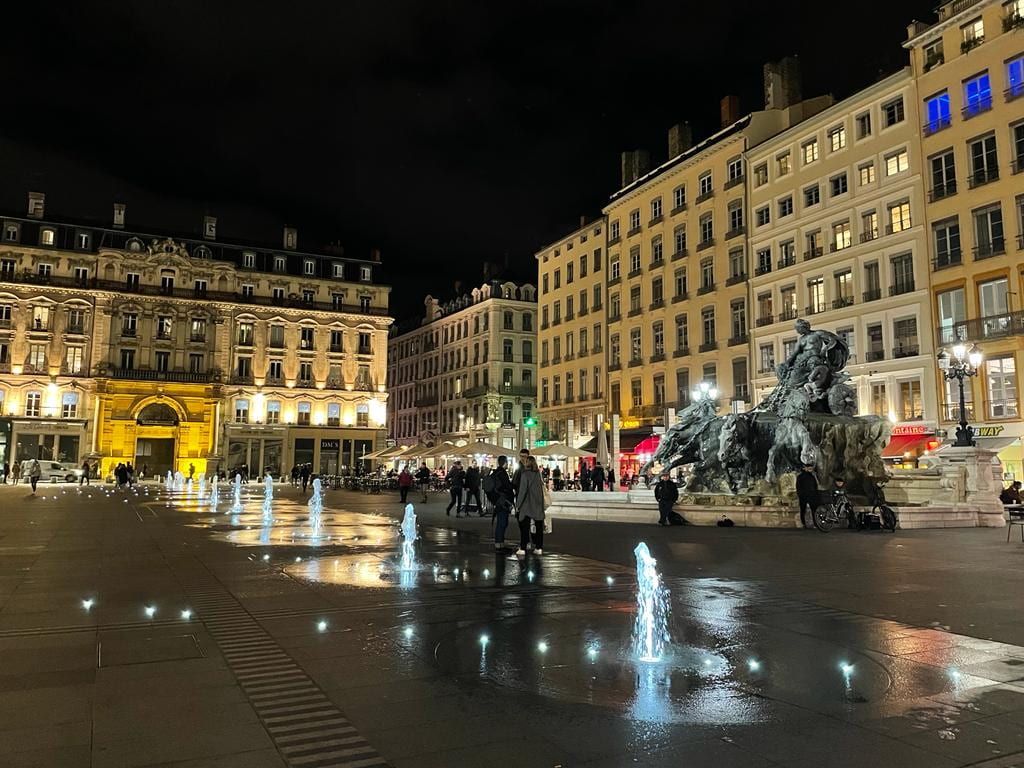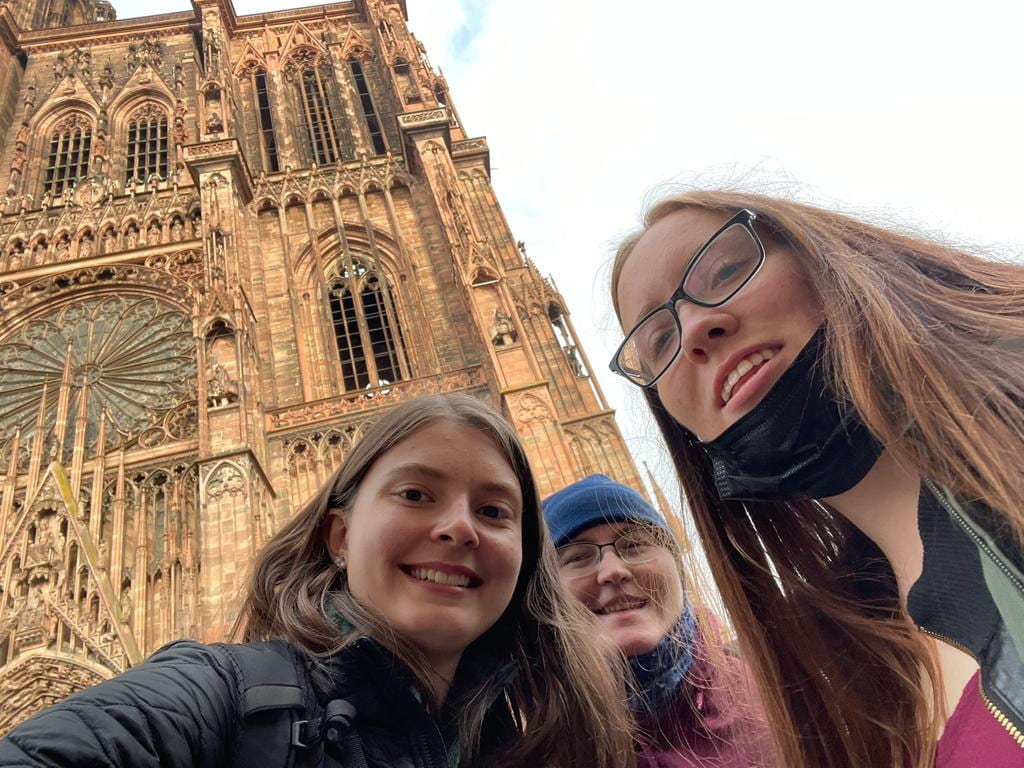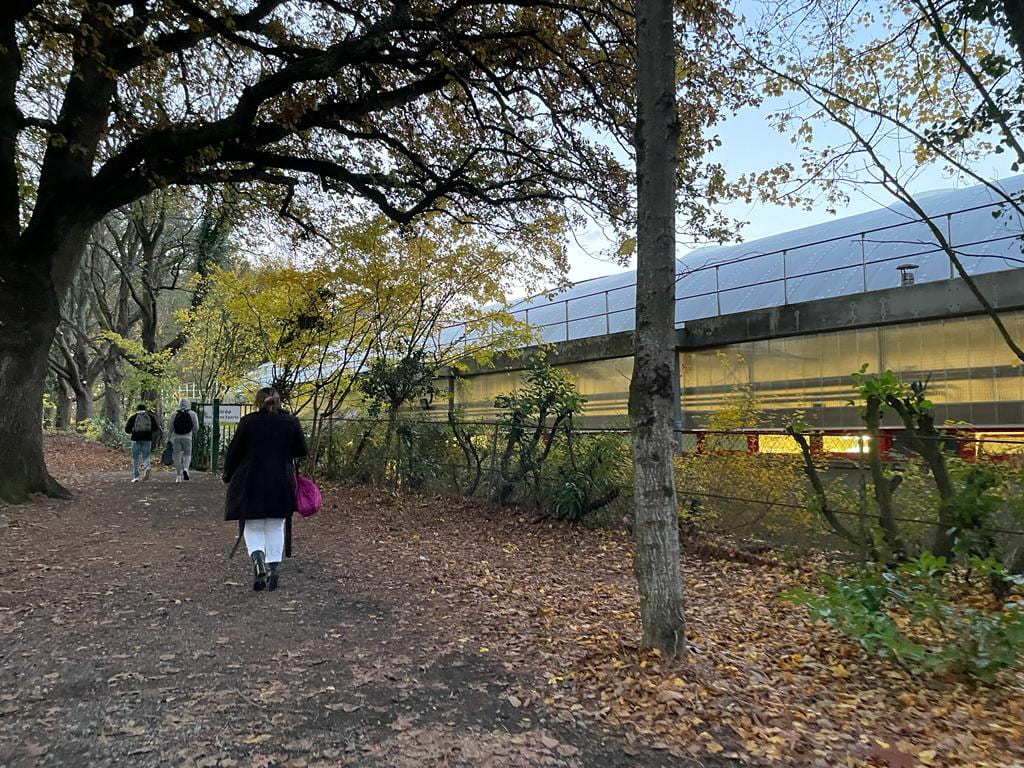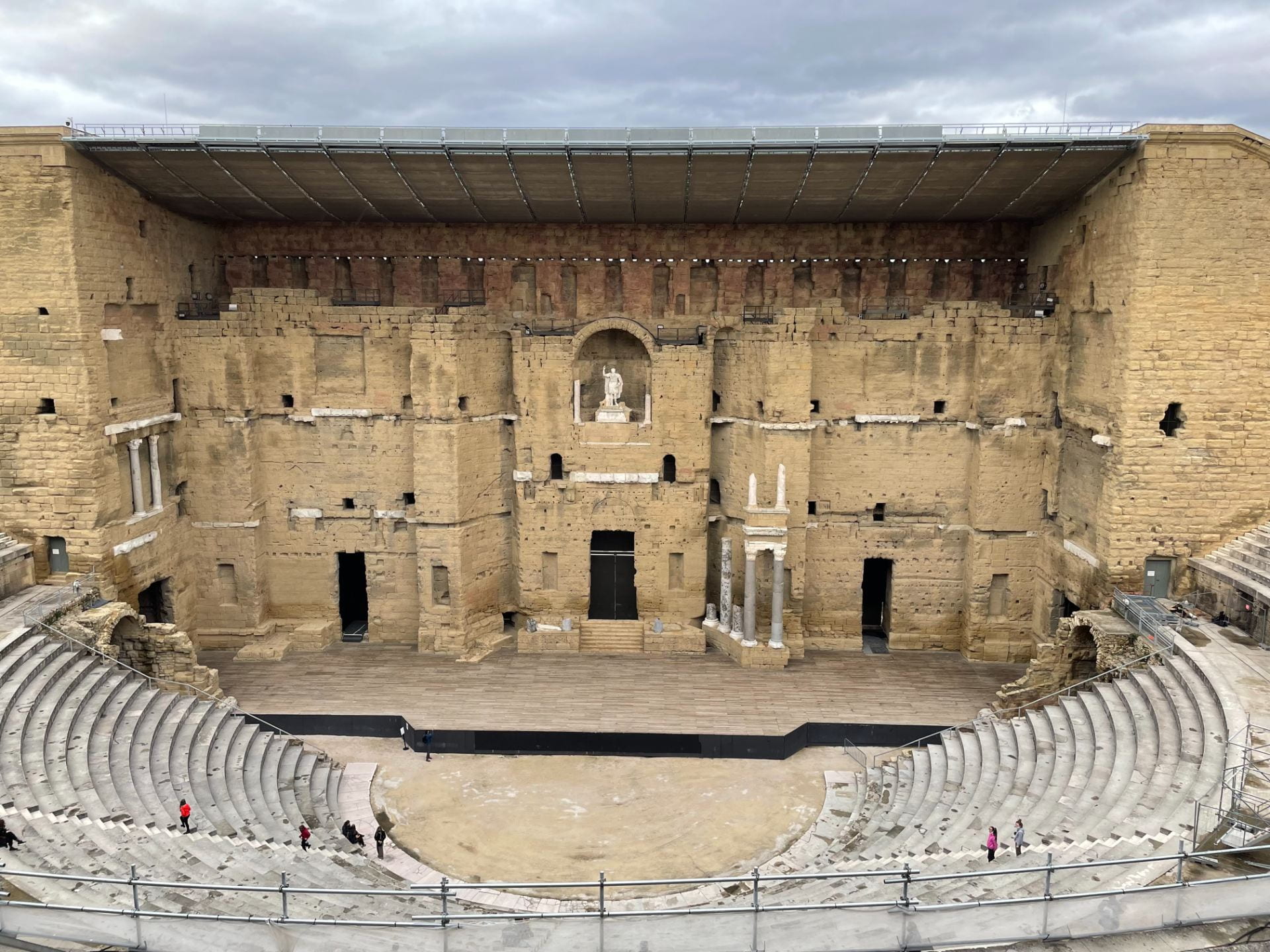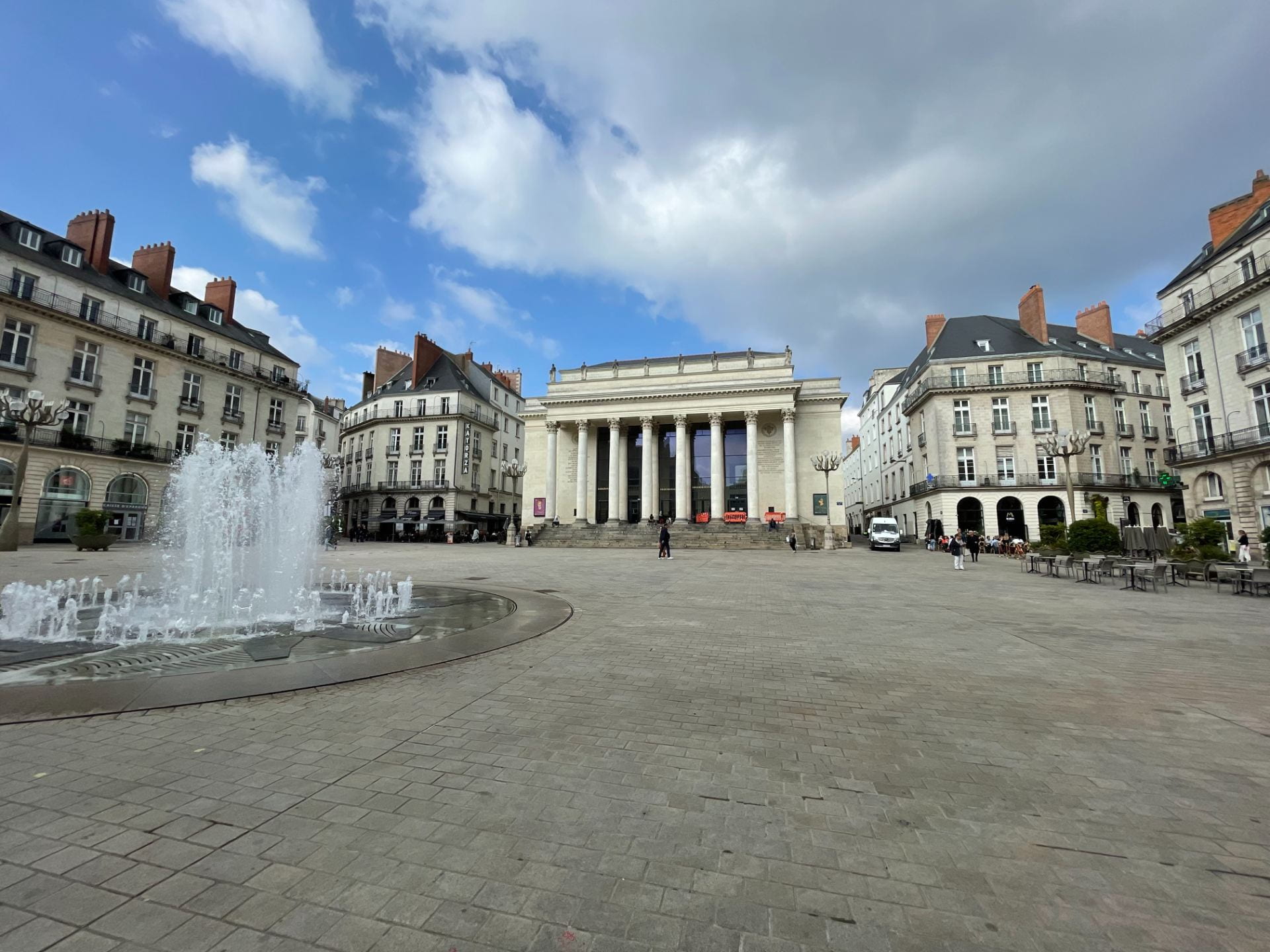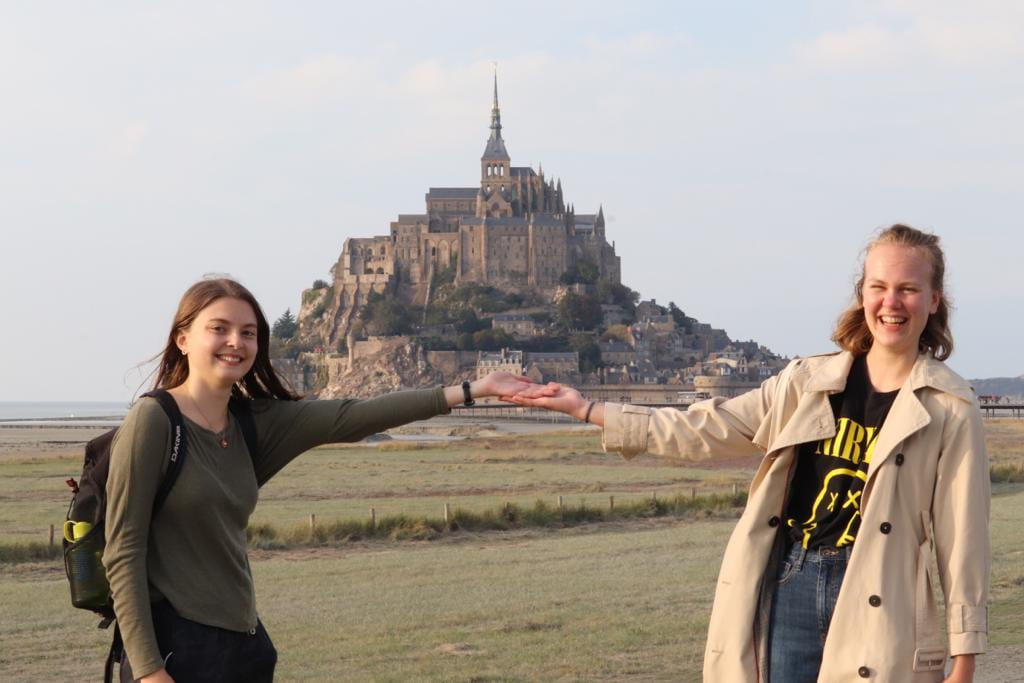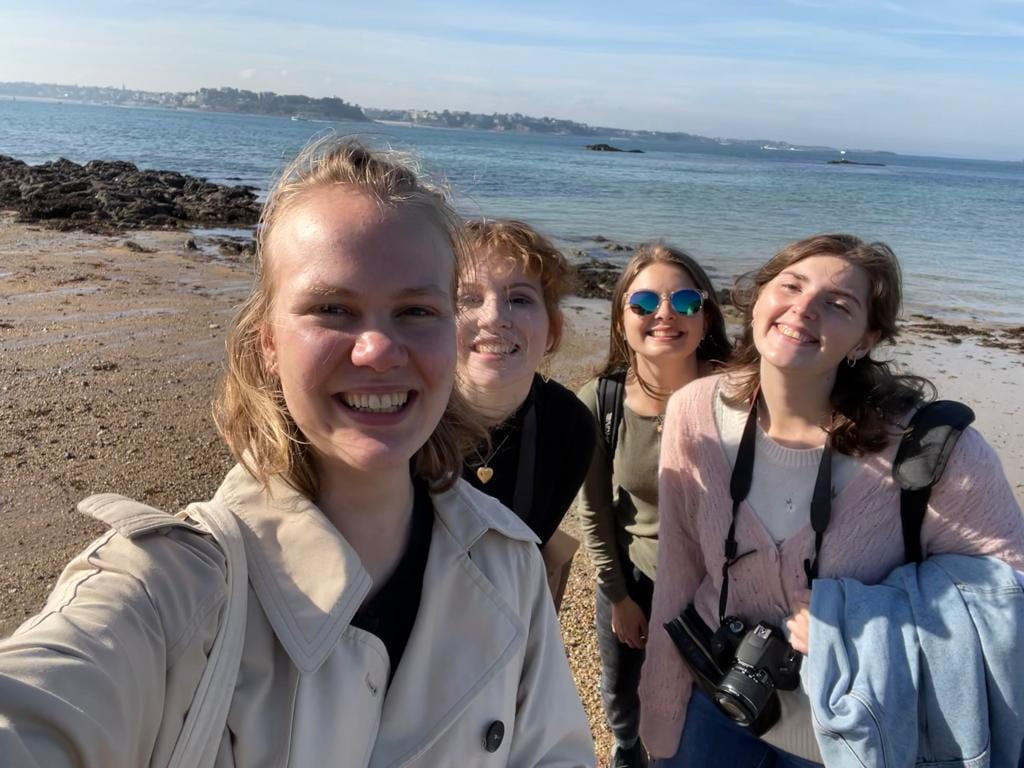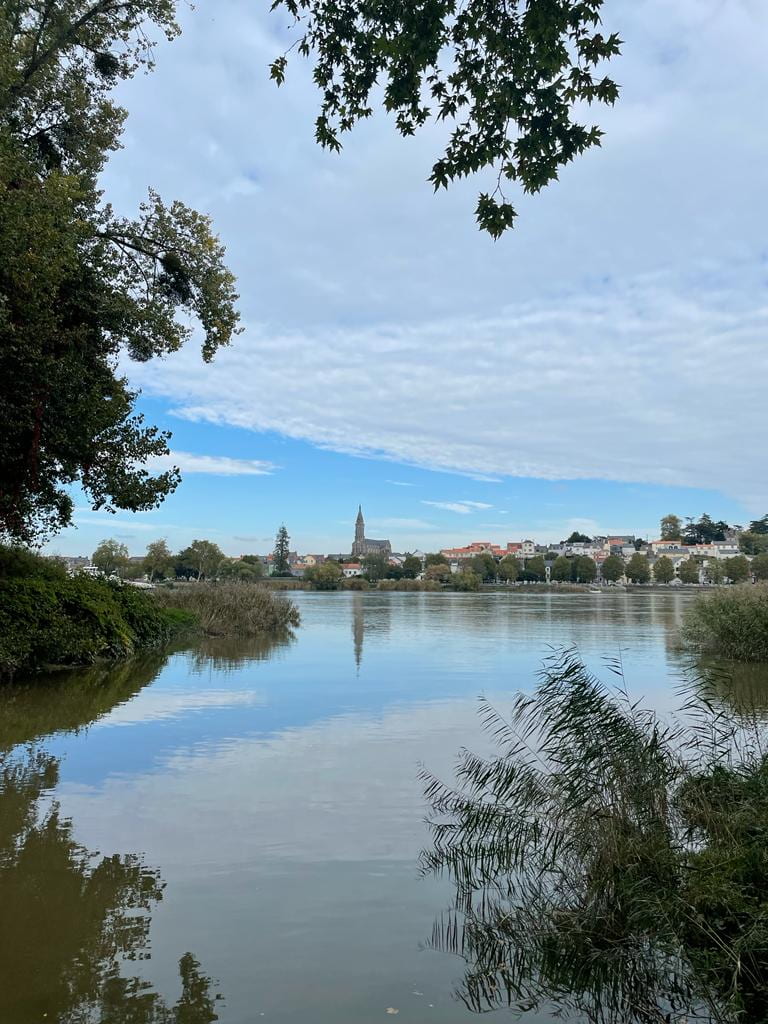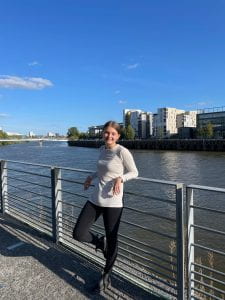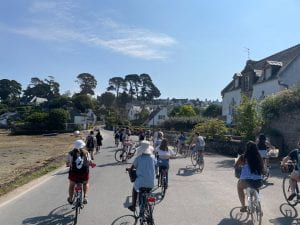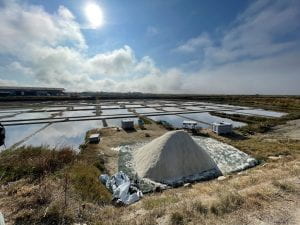Hello, everyone. Hope you are all having a wonderful December so far. Today is Monday, December 6th. This week is my last week of classes before final exams next week.
Let’s jump right into it: these past couple weeks have been an absolute rollercoaster. I made the decision to study abroad during a pandemic, which I do not regret in the slightest, but to say COVID has had a major impact on my semester would be putting it lightly. Three weekends ago, I arrived back from a wonderful weekend trip to discover from my host family that someone in my host brother’s elementary school (école primaire) class had tested positive for COVID. We tried to stay positive, but I was admittedly a bit freaked out, especially as we heard new of more students in his class having tested positive as well as his teacher. The next day, he became symptomatic. Long story short, my host brother tested positive for COVID that Wednesday. After a stressful 24 hours including a somewhat unorganized response from IES, I was placed in a hotel. I was sad to leave my host family but was under the impression that this would only be for a week at most. It has now been a week and a half, and I am writing this blog post while sitting in the bed of my hotel room. This short spurt of independent living has been nice, but I feel like I am missing out on an essential part of the study abroad experience, just as my program is coming to a close. Fingers crossed I will be able to return to my host family at the end of this week, assuming my host parents test negative.
Yes, I am almost done with study abroad. I can’t quite believe it. I have mixed feelings. This semester has been jam packed with incredible experiences that have made me step out of my comfort zone and live in a way I never have before.
Just as an example, a couple weekends ago (just before the COVID crisis happened) I took a day trip to Arcachon in southern France and visited the Dune du Pilat—the tallest sand dune in Europe! I sometimes can’t digest the multitude of sights to see in this country.
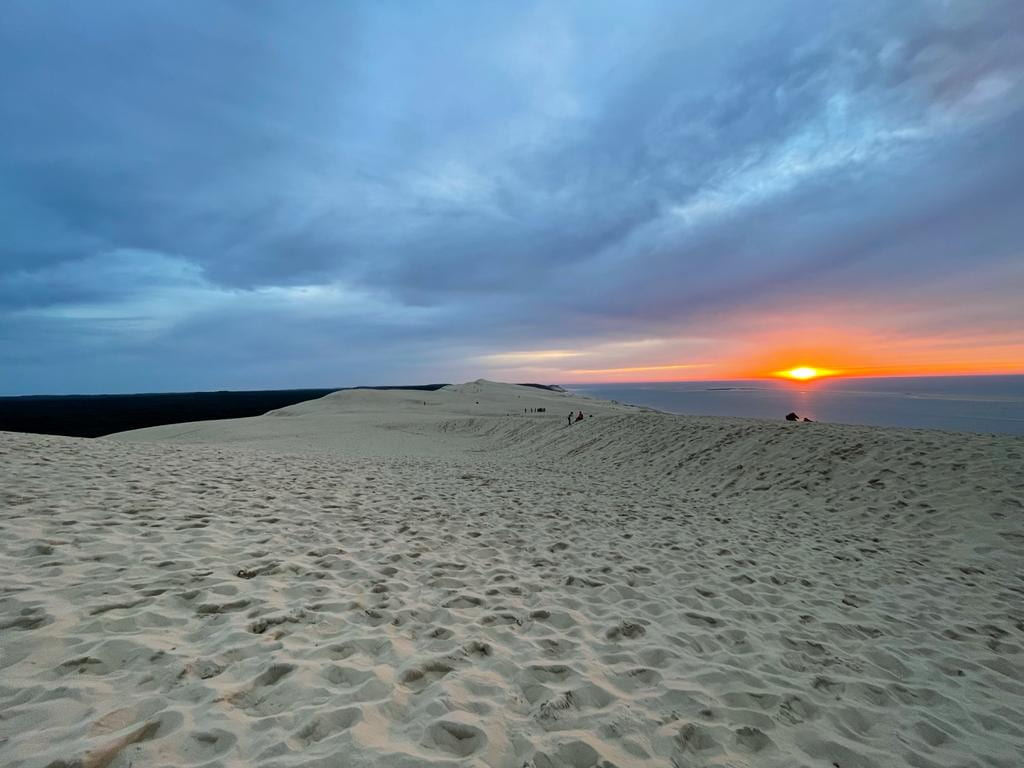
Dune du Pilat in southern France
At the same time, the semester has also had its challenges. This is to be expected, but I don’t think I expected so many flukes to occur. To list a few: I missed the second leg of my flight on the way to France due to a closed gate, had an extremely difficult time receiving a medically necessary package from the US, and now have been thrown out of my host family due to COVID. But I guess that’s an essential part of study abroad—learning to be flexible, taking life’s hardships as they come, and going with the flow. (I personally am still trying to master these skills, but I’m getting a lot better.) I am content but also sad and a bit frustrated, but also curious and exuberant and continuously blown away by my life here—in both a positive and negative sense. I’d say I’ll be ready to go home when the day comes in a couple weeks, but it will be a bittersweet goodbye.
For some more concrete information about life in Nantes at the moment: the holiday season is as spirited as can be. Nantes has a magnificent Christmas market with many vendors selling items including raclette, pasta, handmade wooden toys, artisan jewelry, Mongolian wool clothing items, and vinyl record art. The Place Graslin, the city quarter right near the IES center, has a Christmas tree ride set up complete with a joyful, somewhat inaccurate version of the jingle bells song. People are truly in the Christmas spirit and even the IES center is decorated! Seeing the city transform over these past couple months from a summer activities fair to a holiday spectacle has been something to behold. I never realized how dynamic a city could be, having never lived the “city life” before this.
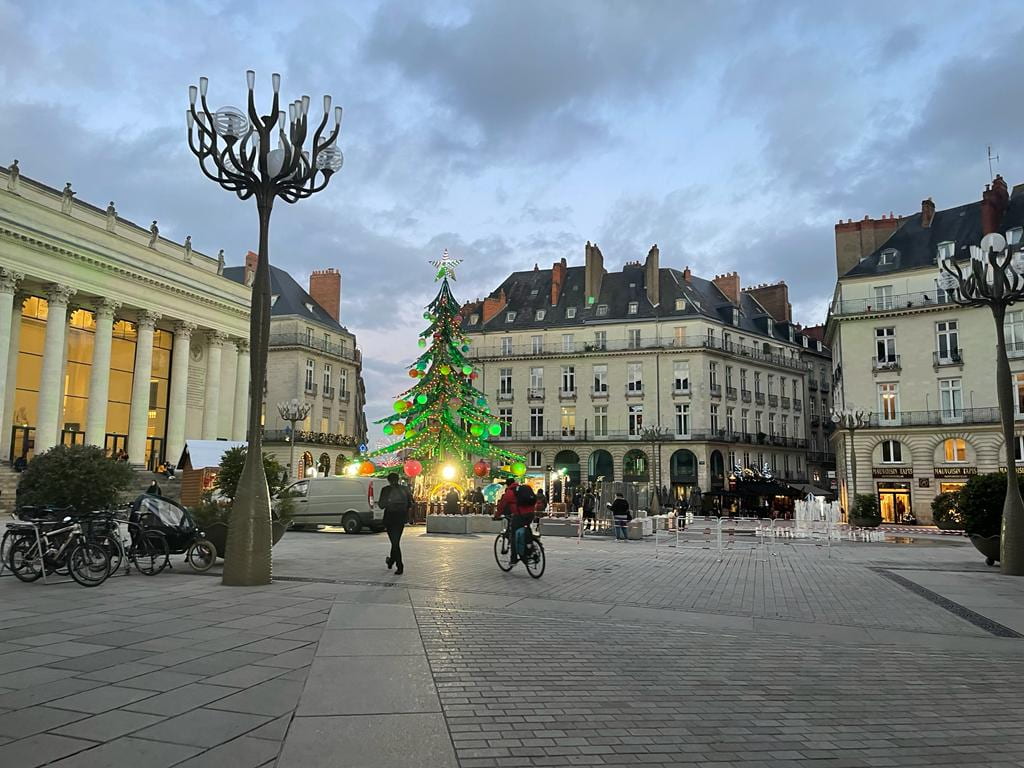
Place Graslin during the holidays
A few other quick tidbits from the past couple of weeks: I practiced “nature morte” (still life) drawing in my art class, went ice skating with the IES group, and went to a Nantes FC soccer game (we lost to Marseille, but it was still very fun!).

Ice skating with friends

Nature morte drawing in art class — my professor snuck in on the left!
Wish me luck on my final essays and exams. I will write another post soon to reflect on my classes with an overview of how final papers and exams work here.
À bientôt,
Ella
